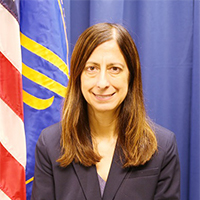It’s been quite a year at the Indian Health Service. During my tenure leading here, I met with patients and tribal and community leaders to hear ideas on how the patient experience could be improved, specifically how the agency could work with tribes to raise the quality of care and expand access to services. In these conversations, I was also reminded of the long-standing systemic problems that often made it difficult for IHS to provide its patients with the best care possible.
Some of these challenges include a rapidly growing service population, medical inflation, aging infrastructure, difficulties attracting and retaining staff in rural areas, and the impact of behavioral health issues affecting the population. For example, limited capital investment means IHS faces a significant backlog in health care facilities maintenance and construction – over $14 billion -- and so the age of our facilities continues to increase. IHS hospitals are now almost four times older than U.S. hospitals.
Aging facilities translate into lower productivity as the space is not designed for current needs which makes it more difficult to attract staff. Ultimately, this affects the quality of care and the patient experience.
I knew confronting these challenges would require a sustained investment of resources and funding over time, something the agency could not change wholly on its own. But when I took the helm early last year, I also knew that with some creative thinking and determination, there was much IHS could do to address these problems and forge a new way of doing business.
Throughout 2016, IHS was proactive and relentless in its confrontation of the severe operational, budgetary, and staffing challenges we faced.
With the support across the U.S. Department of Health and Human Services, including the Executive Council on Quality Health Care, IHS executed a bottom to top review, working with top managers, clinicians, and program experts who took a fresh look at long-standing obstacles to jumpstart a multitude of initiatives to improve the quality of care delivered to patients and enact sustainable reforms.
As we learned lessons in one area, we shared it across our facilities on how we could improve our operations to better serve our patients. And we are already making strides to strengthen IHS’ quality of care delivery and instill a culture of quality care, leadership and accountability across the agency. Collaboration through the Executive Council also led to the development of the 2016-17 Quality Framework [PDF - 147 KB] that IHS will use to establish and implement a sustained, effective quality program.
New partnerships with the Centers for Medicare & Medicaid Services and the Joint Commission – an independent organization that accredits and certifies nearly 21,000 health care organizations and programs – were also established to support best health care practices and other operational improvements for IHS hospitals. This means our IHS teams, who are making a medical decision for a patient, can ask for daily advice from CMS partners, an outside organization like the Joint Commission, or use telemedicine to get a second opinion from another doctor. This is part of ongoing work to prevent quality issues in hospitals before they affect patients.
Reducing staffing shortages is also linked to improving quality of care for patients, and we continue to pursue a mix of short- and long-term solutions to build the IHS workforce. Over 160 U.S. Public Health Service Commission Corps officers were deployed in 2016 to IHS facilities most in demand of staff to meet immediate workforce needs. To promote sustainable workforce development, IHS expanded the number of its facilities eligible to participate with the National Health Service Corps, a program that provides student loan assistance in exchange for working in areas with staffing shortages.
IHS also refocused its scholarship and loan repayment program on the most-needed disciplines in Indian health programs such as physicians, nurses, pharmacists, and behavioral health providers among others to provide patients with more service options.
Improving the patient experience also means making it easier for patients to access specialty services perhaps not readily available in their neighborhood clinic. This spring, IHS will begin implementing telemedicine services to more than 100,000 patients in the Great Plains Area service units in North Dakota, South Dakota, and Nebraska. Patients will be able to visit a nearby facility and using technology, they can have one-on-one time with a health care provider without traveling long distances to see the physician in person.
As my time leading the agency comes to a close, I look ahead knowing that IHS is better positioned to provide its patients with quality care and possesses the momentum to keep improving and moving forward. There is still a lot of work to be done; however, if there is anything I learned throughout my time, it is that it is only through sustained effort over time working side-by-side with our tribal partners and with Congress that we will be able to achieve real and sustainable change to transform health care for the American Indians and Alaska Natives across the country.
Ms. Smith, a member of the Cherokee Nation, leads IHS, a nationwide health care delivery program responsible for providing preventive, curative and community health care to approximately 2.2 million American Indians and Alaska Natives.



